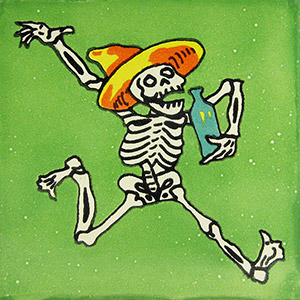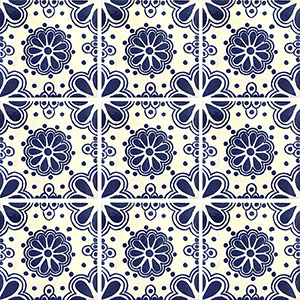Day of the Dead Ceramic Tile is each beautifully handcrafted and feature images which represent the annual celebration of El Dia De Los Muertos (Day of the Dead). A common symbol on our Day of the Dead Talavera Tile is the skull (calavera), which celebrants represent in masks, called calacas (colloquial term for skeleton). These skeletons or “calacas” are meant to depict a joyful and active afterlife, and are often used as home decor.
In many American communities, especially those with a large Hispanic population, Day of the Dead celebrations are very similar to those held in Mexico. In some of these communities, such as in Texas and Arizona the celebrations tend to be mostly traditional. For example, the All Souls Procession has been an annual Tucson event since 1990. The event combines elements of traditional Day of the Dead celebrations with those of pagan harvest festivals. People wearing masks carry signs honoring the dead and an urn in which people can place slips of paper with prayers on them to be burned. Likewise, Old Town San Diego, California annually hosts a very traditional two-day celebration culminating in a candlelight procession to the historic El Campo Santo Cemetery.
Share your love of this annual celebration by incorporating Talavera Tiles which have been decorated with eye-catching Day of the Dead designs. Decorative ceramic tiles are also perfect to simply use as a drink coaster or trivet.


